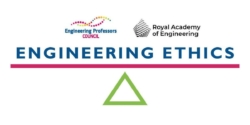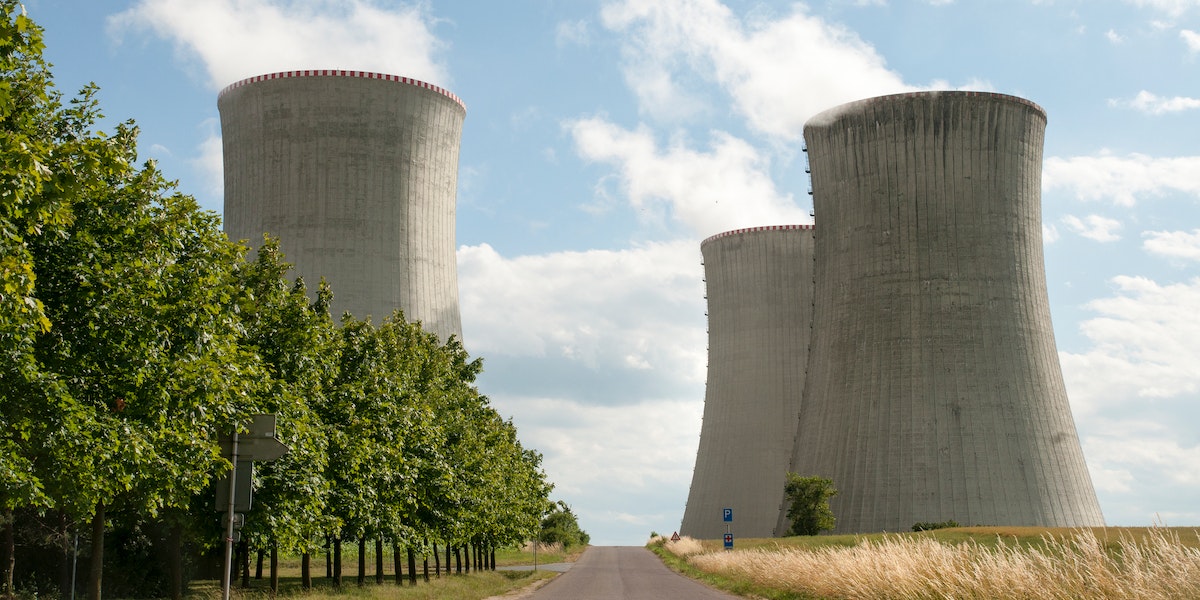 Authors: Diana Martin (Eindhoven University of Technology); Sarah Jayne Hitt, Ph.D. SFHEA (NMITE, Edinburgh Napier University).
Authors: Diana Martin (Eindhoven University of Technology); Sarah Jayne Hitt, Ph.D. SFHEA (NMITE, Edinburgh Napier University).
Topic: Participatory approaches for engaging with a local community about the development of risky technologies.
Engineering disciplines: Nuclear engineering; Energy; Chemical engineering.
Ethical issues: Corporate Social Responsibility; Risk; Accountability; Respect for the Environment.
Professional situations: Conflicts of interest; Public health and safety; Communication.
Educational level: Advanced.
Educational aim: Engaging in ethical judgement: reaching moral decisions and providing the rationale for those decisions.
Learning and teaching notes:
This case study involves an early career engineer tasked with leading the development of plans for the construction of the first nuclear plant in a region. The case can be customised by instructors when specifying the name of the region, as to whether the location of the case study corresponds to the location of the educational institution or if a more remote context is preferred. The case incorporates several components, including stakeholder mapping, participatory methods for assessing risk perception and community engagement, qualitative risk analysis, and policy-making.
The case study asks students to identify and define an open-ended risk problem in engineering and develop a socially acceptable solution, on the basis of limited and possibly contradictory information and differing perspectives. Additionally, students can gain awareness of broader responsibilities of engineers in the development of risky technologies, as well as the role of engineers in public debates and community engagement related to the adoption or development of risky technologies.
This case study addresses two of the themes from the Accreditation of Higher Education Programmes fourth edition (AHEP4): The Engineer and Society (acknowledging that engineering activity can have a significant societal impact) and Engineering Practice (the practical application of engineering concepts, tools and professional skills). To map this case study to AHEP outcomes specific to a programme under these themes, access AHEP 4 here and navigate to pages 30-31 and 35-37.
The dilemma in this case is presented in three parts. If desired, a teacher can use Part one in isolation, but Part two and Part three develop and complicate the concepts presented in Part one to provide for additional learning. The case allows teachers the option to stop at multiple points for questions and / or activities as desired.
Learners have the opportunity to:
- apply their ethical judgement to a case study focused on the adoption of a risky technology;
- understand the national and supranational policy context related to the development of novel technologies;
- analyse engineering risks related to the development of a novel technology;
- investigate the risk perception of the population about the development and operation of a risky technology;
- debate how to factor risks as well as community preferences and risk perceptions into decision-making related to the development and operation of a risky technology;
- identify the key stakeholder groups in the adoption and operation of risky technology in a local and national setting;
- reflect on how risks may differ for different demographic groups and identify the stakeholder groups most vulnerable to the negative effects of risky technologies;
- propose methods for communicating and engaging with stakeholders during the adoption, development and operation stages of a risky technology.
Teachers have the opportunity to:
- introduce a range of ethical considerations related to risk, risk perception and responsibility;
- create a theoretical context for applying methods for qualitative risk analysis, stakeholder mapping and engagement;
- provide an opportunity for group reflection and debate on the topic of a contested and polarising technology;
- present the link between novel technologies and national or supranational targets and plans towards climate neutrality;
- adapt the range and complexity of issues to the characteristics and levels of the class.
Learning and teaching resources:
Journal articles:
- How to perform an ethical risk analysis
- The political science of risk perception
- Performing participatory foresight methods
- Five Guiding Principles to Enhance Community Participation in Humanitarian Engineering Projects
- Participatory technology assessment for Mars mission planning: Public values and rationales
Community engagement organisations:
Dilemma – Part one:
You are an early career engineer working in the civil nuclear industry for Ultra Nuclear. This is a major company overseeing the construction of new power stations that has a strong reputation as a leader in the field with no controversies associated with its activity. Indeed, you have been impressed with Ultra Nuclear’s vision that the transition to using more nuclear energy can significantly reduce carbon emissions, and their development of next-generation nuclear technologies. After two years of working on the strictly technical side of the business, you have been promoted to a project manager role which requires you to do more public engagement. Your manager has assigned your first major project which involves making the plans for the development of a new power plant.
Optional STOP for questions and activities:
1. Activity: Societal context – What is the context in which Ultra Nuclear operates? Identify the national and supranational policies and regulation in your country related to the adoption of nuclear energy. Reflect on the broader rationale given for the adoption of nuclear energy. Research the history of nuclear technological developments (including opposition and failures) in your country. When tracing the context, you may consider:
-
- What is your country’s policy on nuclear energy?
- What are your country’s main sources of energy?
- What are your country’s targets for climate neutrality?
- Will this target be reached?
- What is the current and projected level of emissions?
- How do these national targets fit with EU targets or targets of major economies?
2. Discussion: Personal values – What is your initial position on the adoption of nuclear energy? What are the advantages and disadvantages that you see for the adoption of nuclear energy in your country? What alternatives to nuclear energy do you deem more suitable and why?
3. Discussion: Risk perception – How do you perceive the risk of nuclear energy? How do your family and friends see this risk? How is nuclear energy portrayed in the media? Do you see any differences in how people around you see these risks? Why do you think this is so?
4. Activity: Risk mapping – Using a qualitative risk matrix, map the risks of a nuclear power plant.
Dilemma – Part two:
As it happens, this will be the first power plant established in the region where you were born, and your manager counts on your knowledge of the local community in addition to your technical expertise. To complete your project successfully, you are expected to ensure community approval for the new nuclear power plant. In order to do this, you will have to do some research to understand different stakeholders and their positions.
Optional STOP for questions and activities:
1. Activity: Stakeholder mapping – Who are all the groups that are involved in the scenario?
1.a. Activity: Read the article by Sven Ove Hansson, which puts forward a method for categorising stakeholders as risk-exposed, beneficiaries, or decision-makers (including overlaps of the three categories). Place each stakeholder group in one of these categories.
1.b. Discussion: Why are some groups risk-exposed, others beneficiaries, and others decision-makers? Why is it undesirable to have stakeholder groups solely in one of the categories?
1.c. Discussion: What needs to change for some stakeholder groups to be not only in the category of risk-exposed, but also in the category of beneficiaries or decision-makers?
2. Activity: Stakeholder mapping – How does each stakeholder group view nuclear energy? For each stakeholder group identified, research the arguments they put forward, their positions and preferences in regard to the adoption of nuclear energy. In addition to the stakeholder groups previously identified, you may consider:
-
- The Green party
- Other political parties
- Member of the public
- Local residents
- Advocates of other sources of energy
- Environmental groups and activists (such as Extinction Rebellion, including local chapters, if they exist)
- Human rights activists
- Power plant workers
- The Union of Concerned Scientists
- Climate change deniers
- The Ultra Nuclear company
- Any other stakeholder?
For your research, you may consult the webpage of the stakeholder group (if it exists); any manifesto they present; mass media features (including interviews, podcasts, news items or editorials); flyers and posters.
3. Discussion: How convincing are these arguments according to you? Do you see any contradictions between the arguments put forward by different groups?
3.a. Discussion: Which group relies most on empirical data when presenting their position? Which stakeholders take the most extreme positions, according to you (radical either against or for nuclear energy), and why do you think this is so?
3.b. Discussion: In groups of five students, rank the stakeholders from those that provide the most convincing to the least convincing arguments, then discuss these rankings in plenary.
3.c. Roleplay (with students divided into groups): Each group is assigned a stakeholder, and gets to prepare and make the case for why their group is right, based on the empirical data and position put forward publicly by the group. The other groups grade on different criteria for how convincing the group is (such as 1. reliability of data, 2. rhetoric, 3. soundness of argument).
4. Guest speaker activity: The instructor can invite as a guest speaker a representative of one of the stakeholder groups to talk with students about the theme of nuclear energy. Students can prepare a written reflection after the session on the topic of “What I learned about risks from the guest speaker” or “What I learned about my responsibility as a future engineer in regard to the adoption of nuclear energy.”
Dilemma – Part three:
You arrive at the site of the intended power plant. You are received with mixed emotions. Although you are well liked and have many friends and relatives here, you are also warned that some residents are against the plans for the development of nuclear energy in the area. Several people with whom you’ve had informal chats have significant concerns about the power plant, and whether their health or safety will be negatively affected. At the same time, many people from the surrounding area do not yet know anything about the plans for building the nuclear site. In addition, in the immediate vicinity of the power plant site, the community hosts a small number of refugees who, having just arrived, are yet to be proficient in the language, and whose communication relies mostly on a translator. How will you ensure that this community is well informed of the plans for developing the power plant in their region and approves the plans of Ultra Nuclear? How will you engage with the community and towards what aims?
Optional STOP for questions and activities:
1. Activity: Research empirical data on the risk awareness and risk perception of public attitudes about nuclear energy, and sum up any findings that you find interesting or relevant for the case study.
1.a. Discussion: According to you, is risk awareness and perception the same thing? How do they differ as concepts? Considering the research you just did, is there a relation between people’s risk awareness and perception? What does this imply?
1.b Discussion: Do you identify any differences in the risk perception of the public (based on gender, age, geographical location, educational level)? Why do you think this is so?
1.c. Discussion: Does the public see the same risks about nuclear energy as technical experts do? Why is this so?
1.d. Activity: Read Sheila Jasanoff – The political science of risk perception. What is the key takeaway message for you?
2. Group activity: Compose a survey to understand the risk awareness and risk perception of members of the local community.
2.a. Discussion: What are the key questions for the survey?
2.b. Discussion: How will you distribute the survey and to how many people?
2.c. Discussion: Do you need to make any special arrangements to ensure that the views of all relevant groups are represented in the survey?
2.d. Discussion: How will you use the data from the survey and how do you plan to follow-up on the survey?
3. Group activity: Develop a method for engaging with the community in the stages of developing and operating the nuclear plant.
3.a. Discussion: What values and principles do you highlight by engaging with the community?
3.b. Discussion: How do you choose which participatory methods to use?
You can use the following resources: Participation toolkit or Performing Participatory Foresight Methods, Mazzurco and Jesiek, Bertrand, Pirtle and Tomblin.
Annex:
Localised case study: The development of Nuclear Energy in Ireland.
Context description: Wikipedia entry for Nuclear power in Ireland and the Carnsore Point protests.
Summary:
The entire island of Ireland, comprising The Republic of Ireland and Northern Ireland (part of the UK), has never produced any electricity from nuclear power stations. Previous plans have been opposed as early as the 1970s through large public rallies, concerts, and demonstrations against the production of nuclear energy on the island. At the time, Carnsore Point was proposed as a site for the development of four nuclear reactors by the Electricity Supply Board. Public opposition led to the cancelling of this nuclear project and its replacement with a coal burning power station at Moneypoint. Since the 2000s there has been a renewed interest in the possibilities for producing nuclear energy on the island, in response to climate change and the need to ensure energy security. Surveys for identifying public acceptance and national forums have been proposed as ways to identify current perceptions and prospects for the development of nuclear energy. Nevertheless, nuclear energy in the Republic of Ireland is still prohibited by law, through the Electricity Regulation Act (1999). Nuclear energy is currently a contentious topic of debate, with many involved parties holding varying positions and arguments.
Example of stakeholders: The Irish government; the UK government; political parties; electricity supply board (state owned electricity company); BENE – Better Environment with Nuclear Energy (lobby group); Friends of the Irish Environment (environmental group), Friends of the Earth – Ireland (environmental group); The Union of Concerned Scientists; Wind Aware (lobby group); local community (specified further based on demographic characteristics, such as the Traveller community); scientists in the National Centre for Plasma Science & Technology at Dublin City University (university researchers).
Sources used for the description of the roles: Policy documents; official websites; institutional or group manifestos; news articles, editorials and other appearances in the media.
This work is licensed under a Creative Commons Attribution-ShareAlike 4.0 International License.
Any views, thoughts, and opinions expressed herein are solely that of the author(s) and do not necessarily reflect the views, opinions, policies, or position of the Engineering Professors’ Council or the Toolkit sponsors and supporters.




